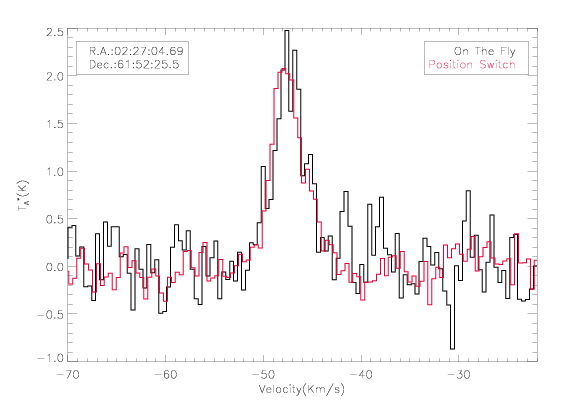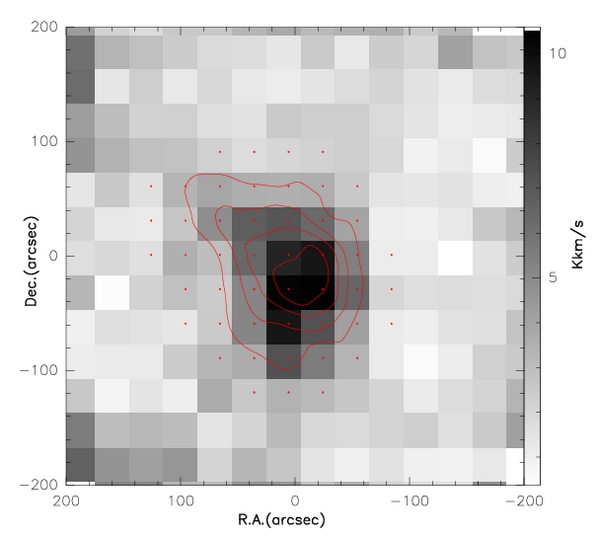The major advantage of OTF observation mode is the high efficiency comparative to the classical grid mode in mapping observations. In early 2009, the former chief scientist, Ji Yang, proposed the OTF observation mode and timetable. Under his direction, the OTF mode was continuously tested and studied in Qinghai Station since June 2009.
In May 2010, after hard work of groups of Ye Xu, Yingxi Zuo, and Shengcai Shi, an OTF test of HNC (1-0) spectral line (~ 90 GHz) mapping was carried out toward the famous star formation region W3(OH), in Qinghai Station and Millimeter & Sub-Millimeter Wave Laboratory of Purple Mountain Observatory, using the FFTS@1GHz. The efficiency of OTF mode is improved remarkably compared with classical grid mapping mode.
The data derived from OTF and classical grid mapping mode are compared, and the following conclusions are drawn:
1. As shown in the Figure 1. and Figure 2., the spectral line intensities, profiles, and the resolved structure in OTF observation agree with those from the classical grid mapping mode.
2. OTF observation costs time 3-7 times less than classical grid mapping mode. The efficiency is improved obviously.
OTF mode is first used in 13.7m Millimeter-Wave Radio Telescope and telescopes in China.
Fig1. Spectral line of PS mode (red) and OTF mode (black) with coordinate resolution ratio (0.03km/s
 .
.
Fig2. Comparison of classical grid mapping and OTF mode. The background grey-scale map is the result of OTF observation and the read isogram is the result of grid mapping mode, and the isogram intensity is 3,5,7,9 Kkm/s.





